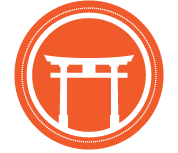Aggression in Aikido
Inryoku Volume 5 Issue 3
By Josh Paul Sensei, AOSB Head Instructor
“The basic principle of aikido is just to attack.”
Recently, I found myself giving a trial class to two would-be students. Both said they were interested in self-defense, fitness, and discipline. I led them through the usual warm-up routine with stretching, rolling practice, and a few exercises. We then did a basic attack and technique (katatetorikosatori ikkyo). Both were shocked when I told them to be more aggressive.
“Q: By the way, many people say “in the Budo called Aikido there are no attacking techniques.”
A: No, that’s ridiculous, the basic principle of aikido is just to attack. Rather than talking about striking, by “attack” we mean that the basic principle is to strike the opponent and draw them out.”
They are not alone. Many people I meet are surprised (and possibly disappointed) upon discovering that aikido is aggressive and that aikido has attacking techniques. But it makes sense: how can we practice any type of self-defense technique without an attacker?
In fact, the quality of our technique is entirely dependent upon the quality of our ukemi (the ability to attack and receive a technique). When uke is able to deliver an intense, focused, and powerful attack, nage must match and exceed uke’s intensity to succeed. A certain amount of aggression from uke is required to bring forth nage’s best technique. When uke is timid or unengaged, it is the nage’s technique that suffers. If uke does not strike or grab with real intention, the responding technique will also lack intention. If uke cannot receive a technique, nage must hold back, also limiting their development.
Whether the attack or technique is something that you think may or may not happen outside the dojo is irrelevant. It is the spirit with which they are practiced that is important. This means understanding the mechanics of ukemi—the attack, the pursuit of nage, and falling—the same way we pursue understanding shihonage or some other technique. Grabbing and striking are techniques need practice and cultivation just like any other.
In aikido, growth comes through the creation and resolution of conflict. This requires a certain amount of aggression. This isn’t to suggest that every exchange between uke and nage should degenerate in to an eye-gouging, fishing-hooking brawl. Rather, uke and nage need to push and challenge one another so that both may develop.
Call for Submissions
Do you like aikido? Do you like to write? If so, share your aikido experiences, challenges, and triumphs in an article for Inryoku! Email us with your ideas and submissions.
(Please! I’m running out of ideas.)




